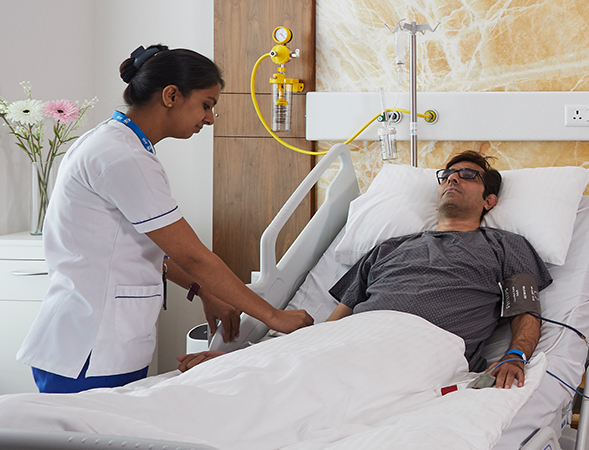Modification of Biliopancreatic Diversion With Duodenal Switch
Biliopancreatic diversion with duodenal switch (BPD-DS) is one type of bariatric surgery that involves two procedures- sleeve gastrectomy and intestinal bypass. The surgery is aimed to bring about weight loss and diabetes control by decreasing the stomach capacity and reducing the absorption of proteins and fats.
Eligibility
Not every obese person is eligible to undergo the surgery. The surgery is chosen for morbidly obese people whose BMI is more than 50, and who have diabetes as a comorbid condition. However, the bariatric surgeon is the best person to advise on the eligibility of the patient for the procedure.
The patient seeking the surgery should have failed to lose weight with diet and lifestyle modifications. The patient should also be willing for life-long commitment to lifestyle changes to maintain the benefits of the surgery.
Patient preparation
The patient is thoroughly assessed by the medical team to ascertain the eligibility of the patient and suitability to undergo the procedure. The past, present, and family history of the patient is taken to determine the risk factors. The patient is counselled in details about the prose and cons, after which an informed consent is taken.
The patient is usually provided asset of instructions to follow before the surgery.
The procedure
The procedure is performed laparoscopically, with the patient under anesthesia.
BPD-DS involves two steps. Firstly, a sleeve gastrectomy is performed to reduce the size of the stomach. The reduced size of the stomach causes less food intake and early satiety, thereby decreasing the calorie intake and eventually weight loss.
The second step is to cut two ends of the intestine to create a bypass through a large segment, to decrease the absorption of proteins and fats, and also facilitate hormonal changes that help control glucose regulation, and manage diabetes.
Modifications of BPD-DS
There are two modifications of the surgery- sleeve gastrectomy with loop duodenojejunal bypass, and sleeve gastrectomy with ileal transposition.
- Sleeve gastrectomy with loop duodenojejunal bypass- This variation involves change in the second step of the BPD-DS. After the sleeve gastrectomy, a part of the duodenum and jejunum is removed and the remaining part is anastomosed to bypass the biliopancreatic limb of the jejunum. This variation of the surgery poses lesser risk of malabsorption compared to the BPD-DS. The benefits include weight loss and diabetes reversal.
- Sleeve gastrectomy with ileal transposition- This variation of the BPD-DS involves performing a laparoscopic sleeve gastrectomy, after which a section of ileum is resected and transposed on to the jejunum. This anatomical change regulates the hormone levels responsible for hunger and weight gain, and eventually results in improved insulin sensitivity, early satiety, less food intake, and leads to improved glucose control and weight loss. The benefits of this surgery comes without the risk of malabsorption.
Post-surgery care
After the surgery, the patient may start taking a liquid diet, and gradually switching to pureed food, then to soft food and later the normal food; however, the diet would remain quite restrictive for sometime. The patient may be advised to take vitamin and minerals supplements to avoid nutritional deficiencies.
Regular follow-up may be needed for monitoring the progress through laboratory testing, bloodwork and various exams.
Outlook
Like other bariatric surgeries, this procedure also requires life-long commitment from the patient regarding the modification in diet, to help maintain the benefits of the surgery. The weight loss and hormonal changes after the surgery may help the patient manage and treat many chronic conditions that eventually improves the quality of life.


